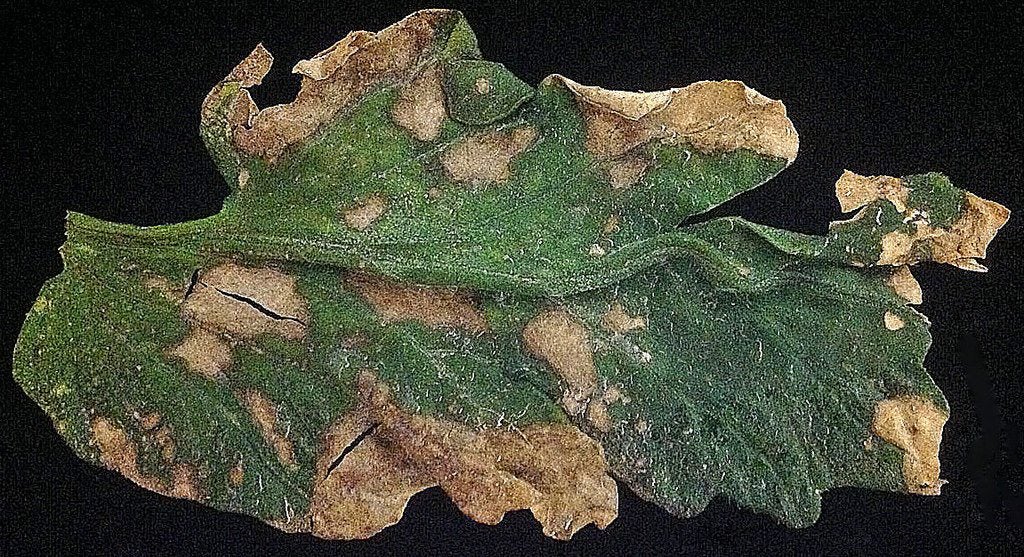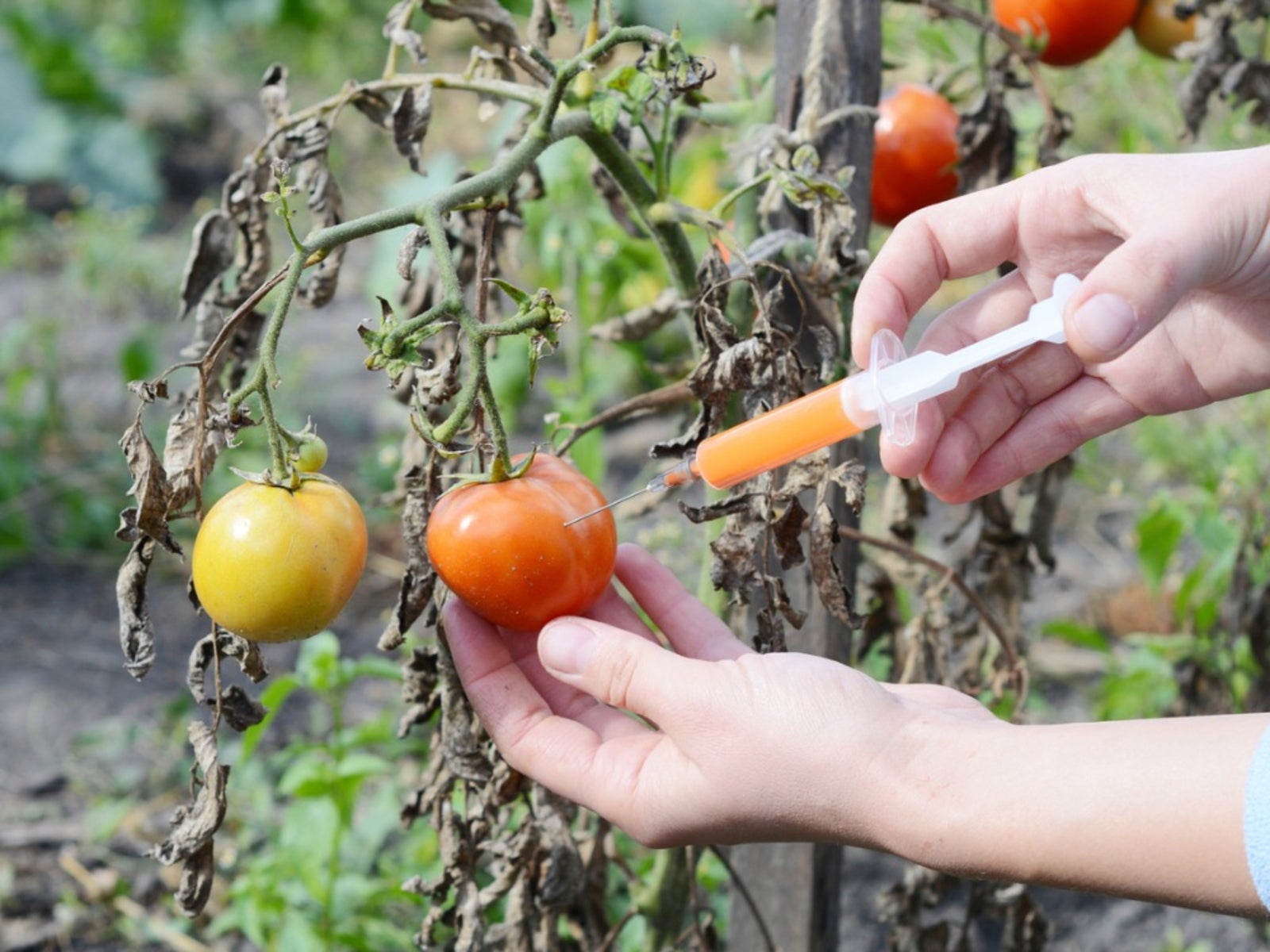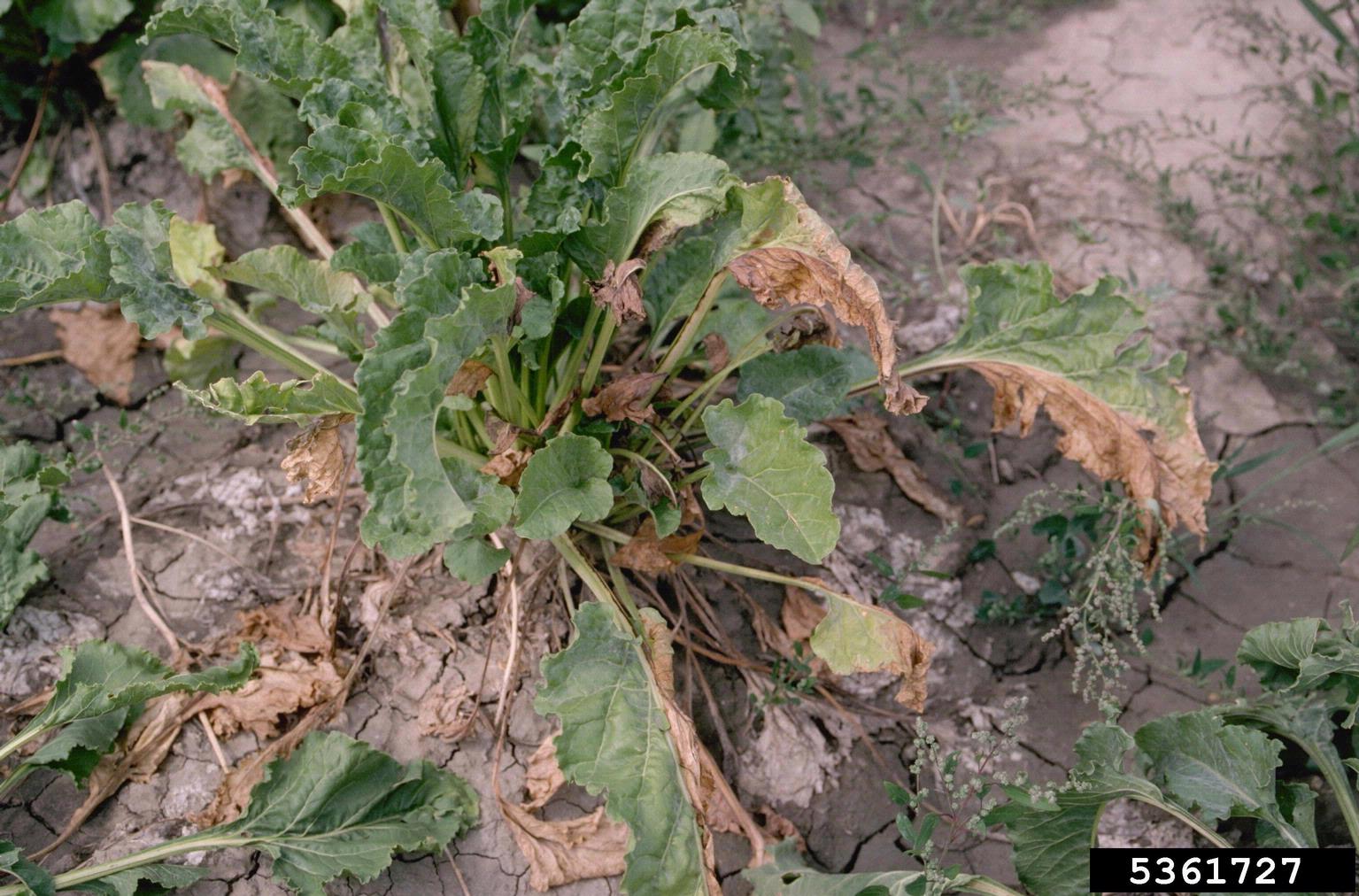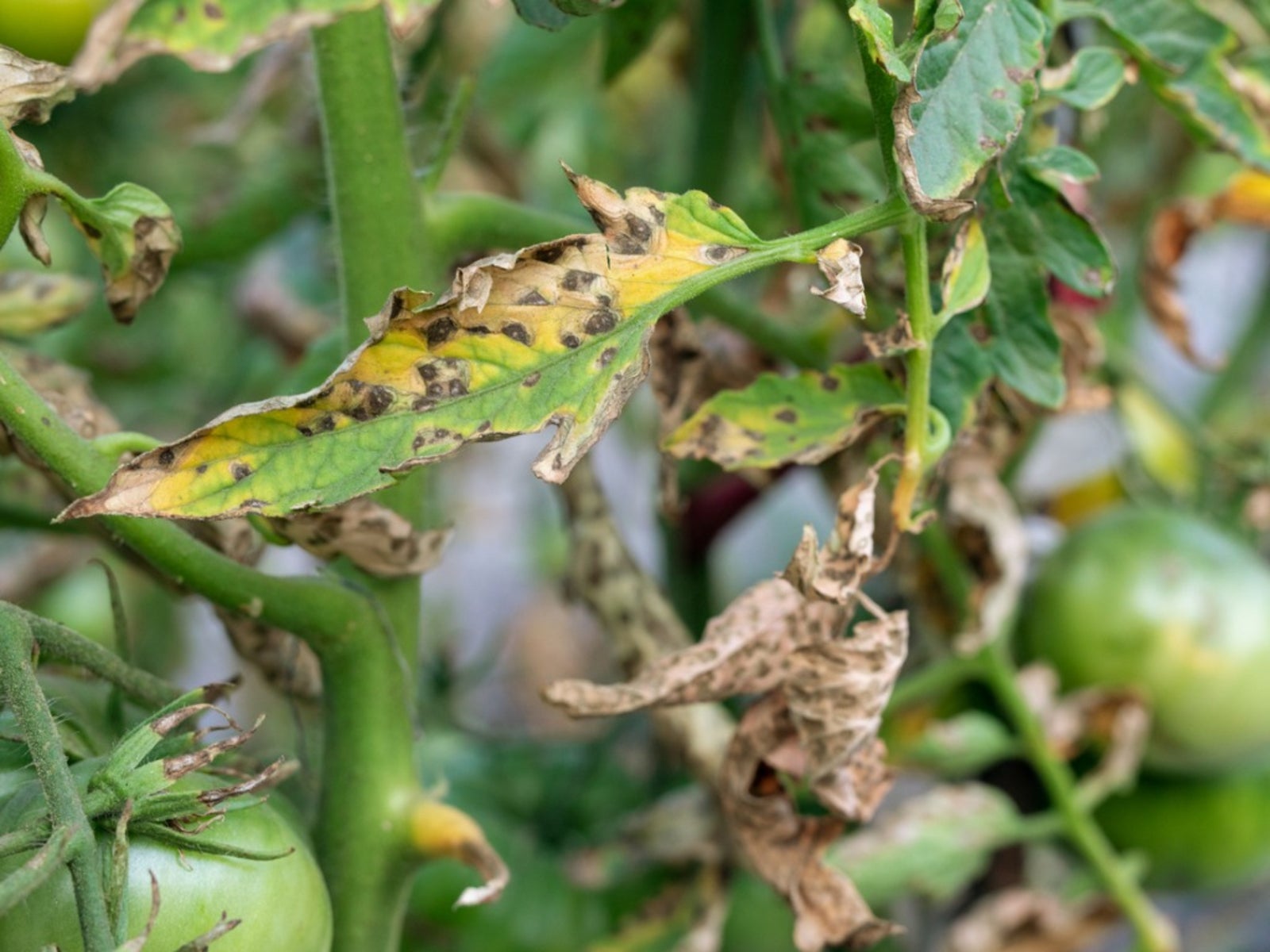Anthracnose: How To Identify, Prevent, And Treat The Fungal Disease
Identifying it is the first step toward anthracnose treatment. Treating those nasty spots with fungicide, proper irrigation, and garden cleanup can help.


Amy Draiss
Anthracnose: Identification, Prevention & Treatment
Anthracnose refers to a group of related fungal diseases that affect plants, including vegetables and trees, in the garden.
Anthracnose disease can cause foliar blight in dry heat or stem rot in wet months. It’s important to learn how to identify this disease as well as the types of anthracnose treatments that are most effective.
What Is Anthracnose?
Anthracnose disease is caused by one of several types of anthracnose fungus. These are fruiting bodies that look like small dark spots on plant leaves or stems. They produce spores and release them in slimy masses.
Fungi (e.g. Colletotrichum cereale) live on dead and rotting organic matter. They cause different types of blight that appear as dark spots on foliage, leaves turning yellow and brown, and/or lesions on leaves. The lesions look sunken and can quickly meld into each other to form irregular lesions.
Plants Affected by Anthracnose
Anthracnose disease can attack a large variety of plants. The vulnerable plants include deciduous and evergreen trees and shrubs It can also affect perennial and annual flowers, as well as vegetables and turfgrass.
Note that each species of fungi targets one host species, or sometimes several closely related species Trees are one of the primary targets of anthracnose disease. These tree fungus issues are sometimes called leaf, shoot, or twig blight.
Symptoms of Anthracnose
One difficult aspect of identifying anthracnose disease is that the symptoms vary widely from plant to plant. Weather conditions can also alter the types of symptoms that appear.
Gardening tips, videos, info and more delivered right to your inbox!
Sign up for the Gardening Know How newsletter today and receive a free copy of our e-book "How to Grow Delicious Tomatoes".
Perhaps the most common symptom is spots. They are small spots, often dark brown or black, and can appear on twigs or leaves of some hosts, including oak. On other anthracnose hosts, like maple and willow, you will see irregular dead areas or lesions along leaf veins.
Mature leaves resist the infection, but symptoms include spotty lesions followed by defoliation. Very young, tender leaves curl and distort when they are infected. Only part of each young leaf will die. You can sometimes see sunken, infected areas on twigs, branches, and stems or trunks. Some trees with compact canopies, like Chinese elm, are particularly vulnerable to permanent damage.
How to Prevent Anthracnose
Most fungal diseases result from wet leaves and stems. Anthracnose is no exception. Infections happen when the foliage is wet for extended periods of time.
To prevent this disease from finding a foothold in your garden, irrigate your backyard plants in the morning, as early as possible. This gives the plants the entire day to dry before nightfall. If you do see infected plants, clip off the plant parts that are infected and toss them in the garbage, not in the compost.
Cleaning up the garden in the fall is always a good idea. And it can reduce the fungal infection the following spring.
Anthracnose Treatment
There is no cure for anthracnose disease. However, sometimes fungicides, applied at the appropriate times, can prevent the fungal disease from spreading to other parts of the affected plant.
During hot, rainy periods, consider using contact fungicides that inhibit spore germination. Again, this will not kill the fungus but can limit the extent and severity of outbreaks. You’ll need to cover the plant with fungicide spray according to the schedule set out on the label. In most cases, you’ll need to thoroughly spray as buds begin to open in spring. It may be difficult or impossible to get appropriate spray coverage on mature trees.
FREQUENTLY ASKED QUESTIONS
- Will anthracnose go away on its own?Anthracnose diseases are fungal in nature, and take off in cool, wet weather. They will diminish and can even disappear in warm, dry weather.
- Can a tree recover from anthracnose?Anthracnose disease can present a threat to trees when severe infections – resulting in defoliation, branch dieback or cankering - occur year after year. However, in less serious cases, the disease does not cause permanent damage to trees.

Teo Spengler is a master gardener and a docent at the San Francisco Botanical Garden, where she hosts public tours. She has studied horticulture and written about nature, trees, plants, and gardening for more than two decades. Her extended family includes some 30 houseplants and hundreds of outdoor plants, including 250 trees, which are her main passion. Spengler currently splits her life between San Francisco and the French Basque Country, though she was raised in Alaska, giving her experience of gardening in a range of climates.
- Amy DraissDigital Community Manager
-
 Try The Trend – Turn Any Bed Into A Keyhole Garden With This Clever In-Ground Composter
Try The Trend – Turn Any Bed Into A Keyhole Garden With This Clever In-Ground ComposterKeyhole gardening is an efficient and sustainable practice that saves space. Get started on this DIY project quickly and easily with an in-ground composter.
By Bonnie L. Grant
-
 4 Superfast Composting Methods: Turn Waste Into Garden Gold In 30 Days Or Less
4 Superfast Composting Methods: Turn Waste Into Garden Gold In 30 Days Or LessTry the fastest composting methods to turbocharge your pile and transform kitchen scraps and garden waste into finished compost in just a few weeks.
By Mary Ellen Ellis
-
 Verticillium Wilt Treatment: What Is Verticillium Wilt And How To Fix It
Verticillium Wilt Treatment: What Is Verticillium Wilt And How To Fix ItLeaves that curl, wilt, discolor and die may mean that a plant is suffering from verticillium wilt. Read here to find out how to distinguish verticillium wilt from other plant diseases and what to do about it.
By Jackie Carroll
-
 Fusarium Wilt Disease: Tips For Controlling Fusarium Wilt On Plants
Fusarium Wilt Disease: Tips For Controlling Fusarium Wilt On PlantsThere is a fungus among us and its name is Fusarium. Fusarium fungus can survive indefinitely, affecting any crop or plant that is contaminated by the soil. Find out how to protect and treat your plants in this article.
By Bonnie L. Grant
-
 Blight Treatment - Symptoms And Control Of Southern Blight On Plants
Blight Treatment - Symptoms And Control Of Southern Blight On PlantsIt happens to the best of us - all your healthy plants wilting and dying. Southern blight on plants is a common problem in many home gardens but it doesn?t have to be. This article will help.
By Jackie Carroll